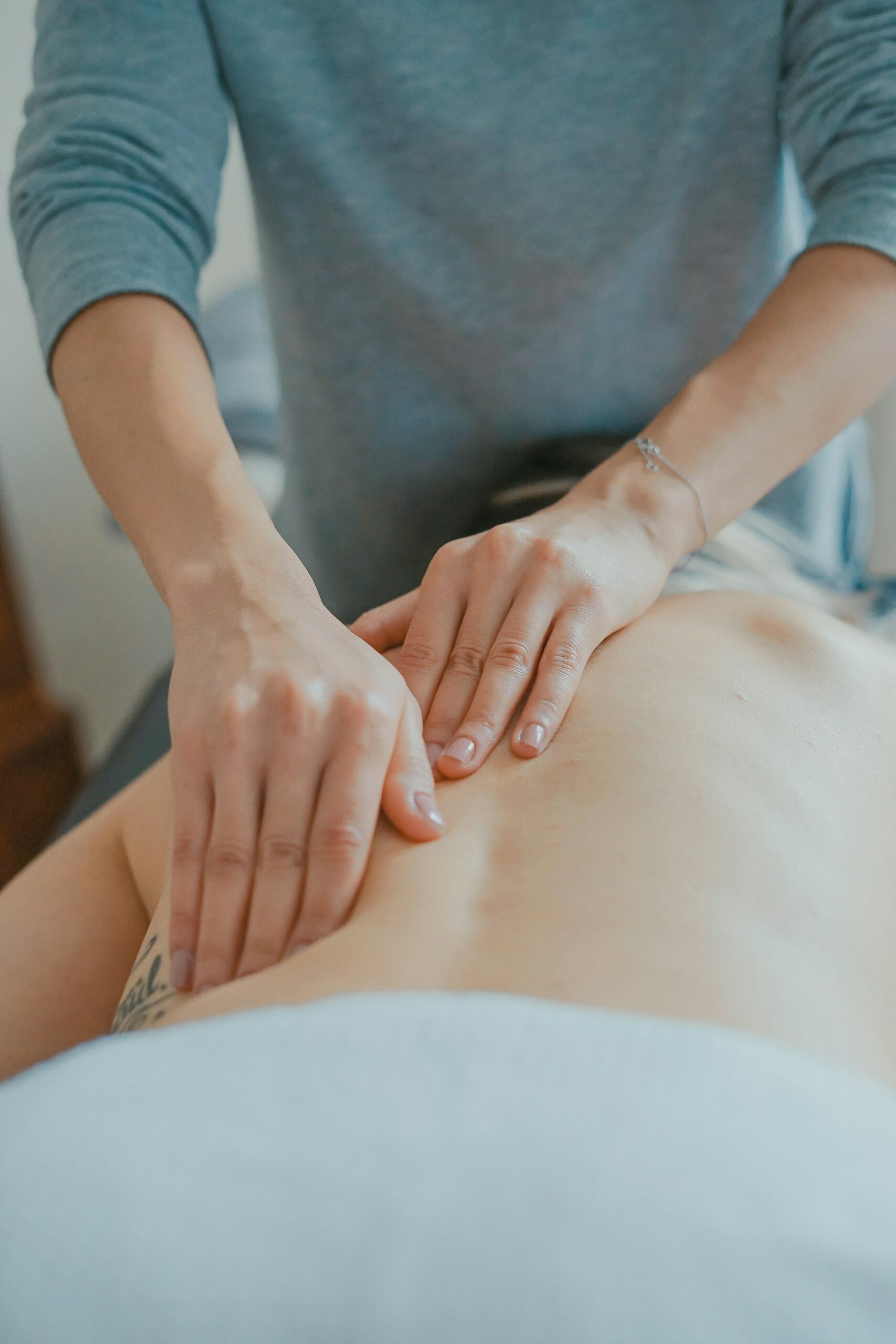Wondering whether osteopathy could be the support your family needs? For parents balancing growing children, unpredictable health hiccups, and the pressures of daily routines, the search for effective, safe, and gentle therapies is front of mind. Painful backs, stiff necks after sleepless nights, colicky babies, headaches, or a toddler who seems uncomfortable — the anxieties quickly accumulate. Should you try osteopathy? Is it safe for infants? What is actually happening during a session, and is there enough medical research to trust these techniques? These are the practical, pressing concerns parents voice every day. Advances in osteopathy offer families a blend of evidence-based, hands-on care and whole-person health strategies. Let’s explore what osteopathy truly offers — from the principles that guide it, to the specifics of pediatric care, and how it fits alongside other therapies parents may already know.
Osteopathy: Principles, Philosophy, and the Body’s Adaptive Wisdom
At its core, osteopathy treats the body not as a collection of disjointed symptoms, but as a unified whole. Visualize the human body as a dynamic system, where bone, muscle, nerve, and organ continually communicate, influencing posture, digestion, immunity, and even emotional well-being. Dr. Andrew Taylor Still’s foundational insight in 1874 — that the body self-regulates and self-heals best when its structure and function are in synchrony — feels strikingly relevant for today’s overstretched parents.
What does this mean in plain terms? If your child suffers repeated earaches or you’re struggling with back pain after caring for a newborn, osteopathy seeks not just to chase symptoms but to restore the physiological balance that prevents recurring issues. It’s a healthcare philosophy rooted in anatomical precision, and it guides practitioners to address not only what hurts, but also why it began, and what keeps fueling it.
Four central tenets shape osteopathy for families:
- The body acts as a functional unit, physically and psychologically.
- It hosts self-healing mechanisms, working around the clock — provided the tissues can move and adapt.
- Structure and function tightly interlock: if a joint stiffens or a muscle tenses, nerve conduction, blood supply, and even digestion may be thrown off.
- Optimal care comes from aligning these realities, restoring movement, and building resilience — so that even amid constant demands, your “vessel” doesn’t overflow.
This brings a broader perspective. Sessions often include guidance on biomechanics, stress management, ergonomic tweaks, and family health history — not just the hands-on portion alone.
The “Full Vessel” Metaphor: Why Prevention Matters As Much As Relief
Imagine your body as a vessel. Daily strains — awkward breastfeeding positions, a toddler’s heavy demands, a sports injury, or sleep deprivation — add drops to this vessel. Resilience allows adaptation for a long stretch, but eventually, a single new drop (a stressful week, a minor fall) is enough to spill over: that’s when you feel pain or dysfunction blossom overnight.
Osteopathy’s magic lies not in magic at all, but in gradual management. Through manual therapy, movement restoration, and targeted posture advice, the aim is to keep the vessel from ever overflowing. It’s a proactive, preventive mindset, not just a rescue mission when pain is already established.
A question for reflection: How often do we wait until discomfort is undeniable before acting? Would anticipating, with routine check-ins that focus on mobility and flexibility, reduce missed school days, parental sick leave, or fraught bedtime routines? Studies suggest yes, particularly when osteopathy is incorporated early and regularly, rather than as a last resort.
Inside an Osteopathy Session: Step-By-Step Experience for Families
If you’re booking an osteopathy session for your baby, child, or yourself, the process is personable and thorough by design. Sessions begin with an extensive health conversation: birth history, medical background, daily routines, and even emotional circuitry can all illuminate the origins of recurrent symptoms. For children, milestones — like sitting, crawling, and walking — are carefully charted.
Next comes the hands-on evaluation, something parents often ask most about. Expect the osteopath to gently examine posture, ranges of motion, and zones where tissue feels tight, inflamed, or cool (common indicators of restricted circulation or nerve irritation). Far from being a passive recipient, you or your child are partners in the process, asked about sensations, responses, and comfort throughout.
Applied techniques vary, adapting to age and individual sensitivity:
- Soft tissue mobilization calms muscles and fascia (the connective tissue that envelops muscles and organs) — think gentle kneading or stretching, suited even for infants with colic.
- Muscle energy asks a patient to gently contract a group of muscles against resistance — a surprisingly playful activity for children, and effective for relieving tension.
- Joint articulation and range-of-motion movements, always tailored, restore healthy mechanics.
- Sometimes, cranial or visceral techiques (for head or abdominal complaints) are suggested. While many families report benefits, research is still ongoing here — a point worth discussing transparently with your practitioner.
Parents sometimes worry about after-effects. Mild soreness, or even a need for extra sleep, is typical and usually fleeting (gone after 24–48 hours). It signals tissue adaptation — but hydration, follow-up stretches, and a lighter activity schedule post-session help maximize benefits.
Techniques and Safety: Grounding Manual Therapy in Evidence
Osteopathy is best known for its hands-on arsenal, but science and safety guardrails matter deeply, especially for babies and children. Osteopathic manipulative treatment (OMT) targets mobility, reduces discomfort, and aims to recalibrate the body’s nervous and immune systems. Key techniques include:
- High-velocity, low-amplitude thrusts (quick, precise movements to restore spinal joints), selectively used and generally avoided in infants or very young children.
- Myofascial release — slow, pressure-based adjustments to connective tissue, known for benefiting colicky babies or children prone to tightness.
- Lymphatic drainage techniques support immune resilience, especially relevant during cold seasons or recovery phases.
Adverse effects? They are exceedingly rare, provided the practitioner screens for risk factors like bone fragility or underlying medical conditions. Always choose someone with specific pediatric or perinatal training — this is where expertise and clinical judgment make all the difference.
Practical steps for parents post-session:
- Ensure extra fluids for your child
- Delay intense athletic activities for 24 hours
- Adhere to instructed home exercises, if given
When and Why To Seek Osteopathic Care — Acute Episodes and Preventive Check-Ins
Most families reach for osteopathic care when back pain, headaches, or feeding troubles have become disruptive. Yet, the greatest benefits often emerge from regularly scheduled visits, three times a year, customized to your family’s needs and your child’s growth stages. This isn’t about dependency — rather, about building physical literacy and catching biomechanical strain early.
Parents sometimes wonder: Should osteopathy replace other therapies? Evidence says no — it complements mainstream medicine. It can seamlessly blend with physiotherapy after injuries or with pediatric check-ups for developmental tracking. Always coordinate with your GP or pediatrician, especially for complex or persistent symptoms.
Osteopathy for Pregnant Women, Babies, and Children: Targeted, Gentle, and Age-Appropriate
Pregnancy brings its own cascade of shifts. As ligaments soften and posture changes, backaches and pelvic discomfort often creep in. Osteopathy offers gentle, adaptive care, focused on pain relief, pelvic balance, and preparing muscles for labor. Postpartum mothers may also benefit: restoring abdominal tone, soothing upper back pain (from endless feeding positions), and decompressing the emotional charge of early parenthood.
For babies and children, osteopathy’s soft touch proves reassuring:
- Repeated ear infections, feeding issues, and coordination problems prompt many parents to seek support. Techniques like craniosacral therapy and soft tissue manipulation recognize the delicate structure of growing bodies.
- Each session is calibrated to age, size, and temperament.
- Practitioners partner with your broader healthcare team, supporting motor development, school participation, and overall family harmony.
Current research most strongly supports osteopathy for musculoskeletal problems (sore backs, stiff necks, certain headaches). For pediatric and family concerns, studies continue to grow — always ask your practitioner about the latest evidence.
Osteopathy, Chiropractic, and Physiotherapy: Key Differences for Families
It’s easy to get lost choosing between manual therapists. What really distinguishes these paths?
- Osteopathic physicians (DOs) in the US have full medical licenses and can prescribe medication and perform surgery, integrating manual therapy with mainstream care.
- Manual osteopaths (more common outside the US) focus exclusively on hands-on treatments, but lack prescribing authority.
- Chiropractors concentrate on spinal alignment, often using rapid, high-velocity techniques. They do not prescribe medication.
- Physiotherapists prioritize rehabilitation after injury or surgery, with a toolbox of exercise-based therapy, ideal for motor skill development in children.
For pediatric care, always verify the practitioner’s qualifications, pediatric experience, and regulatory recognition. Above all, choose a professional whose approach and communication style foster trust and open dialogue.
Selecting the Right Osteopath: Practical Tips for Parents
The art of osteopathy lies just as much in the practitioner’s touch as in their listening skills and adaptability. What should parents look for?
- Verify board certification and licensure
- Ask about pediatric or maternity-specific training
- Seek out clear, evidence-driven answers to your questions
- Prioritize collaborative professionals who are willing to work alongside your family doctor or pediatrician
Most importantly, notice how you feel during interactions: calm and informed? Or rushed and confused? Trust those signals.
Making Osteopathy a Family Habit: Integration and Practical Advice
Osteopathy’s effectiveness often hinges on integration — not just within the clinical session, but at home, day in and day out. Routine care with an osteopath means periodic health reviews, hands-on treatment, and take-home advice addressing posture, movement, and child development. For families, practical adjustments (think: improved schoolbag ergonomics, playful posture games, flexible stretches) foster long-term benefits.
Maintain open communication with your child’s pediatrician. Osteopathy serves you best when it complements, not competes with, routine medical care. Hydration, stress reduction, nutritious meals, and daily movement — all support your family’s musculoskeletal and overall health.
Controversies, Limitations, and the Need for Ongoing Research
Some aspects of osteopathy — especially cranial and visceral manipulation — spark debate in the medical community. While anecdotal accounts of symptom improvement abound, robust research validation is still underway. For pain and musculoskeletal issues, the data is solid. For digestive or developmental troubles, parents should stay informed and skeptical, always discussing possible treatments with trusted professionals.
Choose practitioners who engage with current research and communicate clearly about which benefits are proven, and which are still hypotheses. Evidence-based, patient-centered care should anchor every recommendation.
Key Takeaways
- Osteopathy addresses health by restoring movement and equilibrium across the whole body — for infants, children, and adults alike.
- Qualified osteopaths use a broad toolkit, from soft tissue techniques to osteopathic manipulative treatment (OMT), always adapting to the patient’s age, condition, and comfort.
- Current research backs osteopathy mainly for musculoskeletal pain; benefits for other problems remain under scientific review.
- Safety depends on practitioner expertise, appropriate screening, and clear parent-practitioner communication.
- Osteopathy works best as a complement to regular medical oversight.
- Families can empower themselves by choosing certified, pediatric-trained practitioners.
- Guidance is always within reach: connect with your usual healthcare professionals, and consider Heloa for personalized tips and free health questionnaires to track your child’s well-being.
The well-being of your family is built on knowledge, vigilance, and open collaboration. Diverse therapeutic options exist; osteopathy is a valid, evolving choice for those seeking gentle, holistic care.
Questions Parents Ask
What qualifications should an osteopath have, and how can parents verify them?
Parents often seek reassurance regarding the professional background of osteopaths. It is essential to choose a practitioner who holds a recognized degree in osteopathy and is listed with a reputable regulatory body in your region. These organizations ensure that standards of safety, training, and ethical practice are maintained. You can typically check a regulatory body’s website to confirm if a practitioner is registered and up to date with their education. Don’t hesitate to ask the osteopath directly about their credentials and any specialized training in pediatric or perinatal care, especially when it concerns the well-being of children and babies. Your comfort and trust are important in the therapeutic relationship.
What types of conditions can osteopathy help with in children and adults?
Osteopathy offers support for a range of musculoskeletal concerns such as back pain, neck discomfort, and joint or muscle problems. Some families also turn to osteopathy for help with mobility issues, certain headaches, and tension-related discomforts. While many people observe improvements in overall well-being and mobility, it is always wise to discuss any persistent health symptoms with your primary healthcare provider before starting osteopathic sessions. Collaboration between your osteopath and family doctor is encouraged, as each brings their expertise to support your family’s health in a balanced, holistic manner.
How does osteopathy differ from other manual therapies like chiropractic care or physiotherapy?
Understanding the distinctions between manual therapies can be confusing for parents. Osteopaths use a hands-on approach focused on the body as an interconnected whole, aiming to restore balance and encourage the body’s self-healing processes. Chiropractic care, on the other hand, often centers on spinal alignment and may use quicker, targeted movements. Physiotherapists generally emphasize rehabilitation after injury or surgery, using structured exercise programs and tailored functional therapies. Each discipline comes with its own strengths, and sometimes they work well together. If you are uncertain about which approach best fits your family’s needs, taking time to consult with healthcare professionals and sharing your specific concerns can provide helpful clarity and peace of mind.
Further reading:









